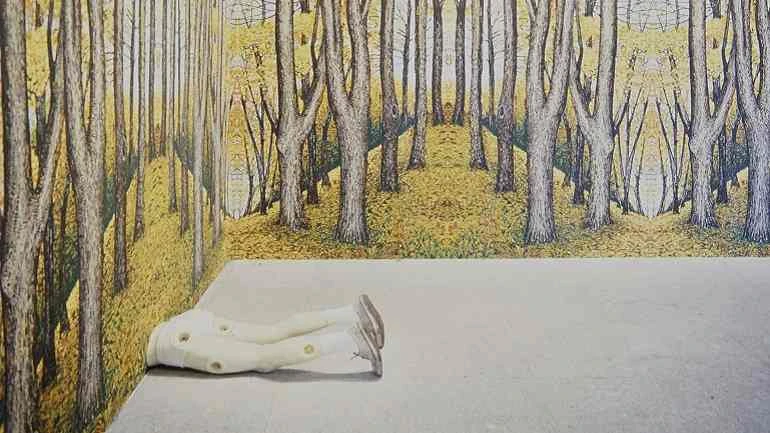Robert Gober

The exhibition is made up of twenty works, the oldest being Untitled. Corner sink (1983) is comprised of a series of different sized and shaped sinks and beyond this particular object (his reminiscences) and the use of and reference to daily objects, Gober distances himself from both the ready-made and the objet trouvé and instead of acting as an appropriationist, not using found objects, whatever their origin, he creates all of his pieces by hand, employing wax casts for the human breasts, legs, torsos, and backsides and even uses real hair and fabrics (a wedding dress). In this vein, daily objects and human anatomy are unsettling and have a sinister presence, heightened when the legs and hips appear to be coming out of the wall or have been dismembered by it. Yet Gober recognises the diverse origins of his iconographic allusions - newspaper illustrations, department store catalogues, El Bosco and René Magritte, who is the influence for the image in Cigar (1991), featuring, as the artist puts it, an enormous “body-sized” 180 cm cigar. Gober clearly uses man as an artistic measurement and his environment as an exhibition space.
His sculptures portray the idea of fragmentation and insertion (they are placed as bodies coming out of walls) while the pattern designs for painted textiles and wallpaper aim to incite the notion of series with a perceptive anaesthetic, stemming from the phenomena of repetition. This can be clearly discerned in the motif “sleeping white man/lynched black man” created in a dog bed, Untitled (1988), and in the male and female genitals scratched in white on black wallpaper. His work can be seen as provoking and challenging at the same time - in process because it falls somewhere between craft and industry (although it does evoke Duchamp's methodology), and in concept because his works are a medium for speaking out against a consumerist society that lacks the ability to criticise what comes from outside, while at the same time reiterating the racial and sexual discrimination that dominates North American society and condemning the social marginalisation of people with AIDS.
Artists
Galerie Nationale du Jeu de Paume, Paris (October 4, 1991 - December 1, 1992)
Organised by
Museo Nacional Centro de Arte Reina Sofía and Galerie Nationale du Jeu de Paume, Paris
Image gallery

Itinerary
Galerie Nationale Jeu de Paume, París
4 October, 1991 - 1 December, 1991
Museo Nacional Centro de Arte Reina Sofía, Madrid
14 January, 1992 - 8 March, 1992